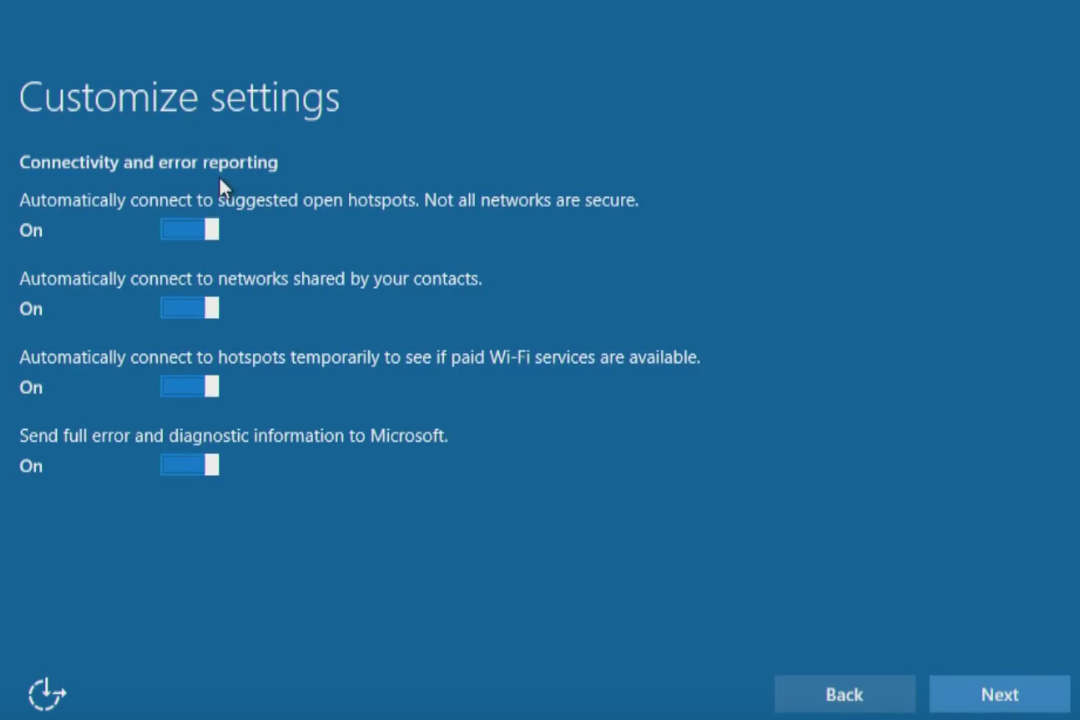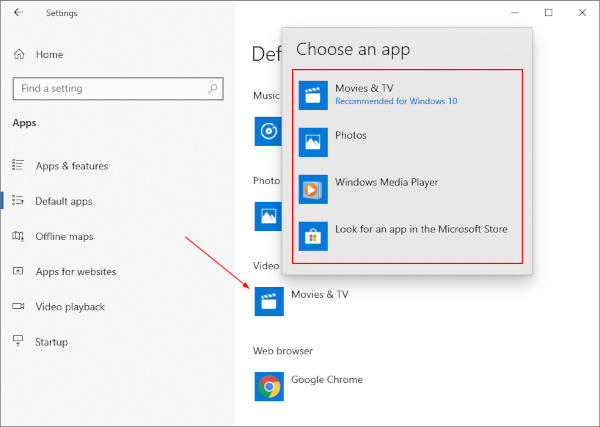

- #How to change app settings windwos 10 update
- #How to change app settings windwos 10 full
- #How to change app settings windwos 10 windows 10
- #How to change app settings windwos 10 windows
Select the program you want to set as the default program, such as Paint. To modify the default program that opens PNG images, scroll down to the PNG file type and click the icon of the current default program, as shown below. Next to each file type, the default program is listed, followed by a list of other programs that can open the file. The Default Apps By File Type window displays all the file types currently on your system. Next, select "Default apps" from the list of System settings and click "Choose default apps by file type", which is near the bottom of the right pane. Click System, which is the first option shown below.

Here you can set default programs, change default programs or reset to Microsoft defaults, so just click on Set your Default Programs. Now click on Default Programs option and you’ll see the default program options. This will open the Settings app, which allows you to choose settings for Devices, Accounts, Network & Internet, System, and more. Go to Control Panel and click on Programs.
#How to change app settings windwos 10 windows
To access this list, open the Start menu (click the Windows icon) and select Settings.
#How to change app settings windwos 10 full
This method allows you to view and modify the full list of file associations available in Windows 10. If you do not check this box, the file will open once in the selected program, but the file association will not be changed universally. NOTE: To permanently change the file association, make sure to select the option "Always use this app to open.

In the example above, clicking OK would set Paint as the default program for all files with a ".png" extension. Once you have selected a program, check the box next to "Always use this app to open. This window allows you to select a default program for the selected file type. In the screenshot below, you can see that Microsoft Photos is associated with ".png" files.Īfter you select "Choose another app," the following "How do you want to open this file?" dialog box appears. To change the file association for a specific file type, right-click a file and select Open With → Choose another app. In Windows 10, there are two methods you can use to change file associations.
#How to change app settings windwos 10 update
After you update the file association, when you double-click a PNG file, it will open in Paint rather than Photos by default. You can associate a different program, like Microsoft Paint, with all files that have a ".png" extension. If you prefer to use another program to open PNG files, you can change the file association. Step 6: At last, don't forget to click OK to execute the operation.Windows 10 uses file associations to determine which program will automatically open a specific file type on your computer. You can also input your own icon by clicking Browse > click OK. Step 4: Click the 3-dots button in the pop-out window. Step 3: Right-click the file and choose Edit Selected File Type. Step 2: Find the file type that you want to change its icon.
#How to change app settings windwos 10 windows 10
Step 1: Get File Types Manager on your Windows 10 PC. Change a Type of File's Icon on Windows 10ĭifferent from personalizing desktop icons or folder icons, changing the icon of a type of file needs the help of the third-party tool like File Types Manager and here it will be used as the utility. Step 4: Hit OK to finish changing the folder icon.ģ. Step 3: You can replace the folder icon with a basic/personalized one. Step 2: Choose Customize and click Change Icon in the Properties window.

Step 1: Right-click the folder and select Properties in the context menu. Tip: The icon type can be exe, dll, or ico. Step 4: Choose a new icon from the list or click Browse to input an icon and tap OK. Step 3: In the Desktop Icon Settings window, select the desktop icon you want to change and click Change Icon. Step 2: Slide the left pane and locate to Related Settings. Step 1: Click Start > select Settings > choose Personalization click Themes.


 0 kommentar(er)
0 kommentar(er)
